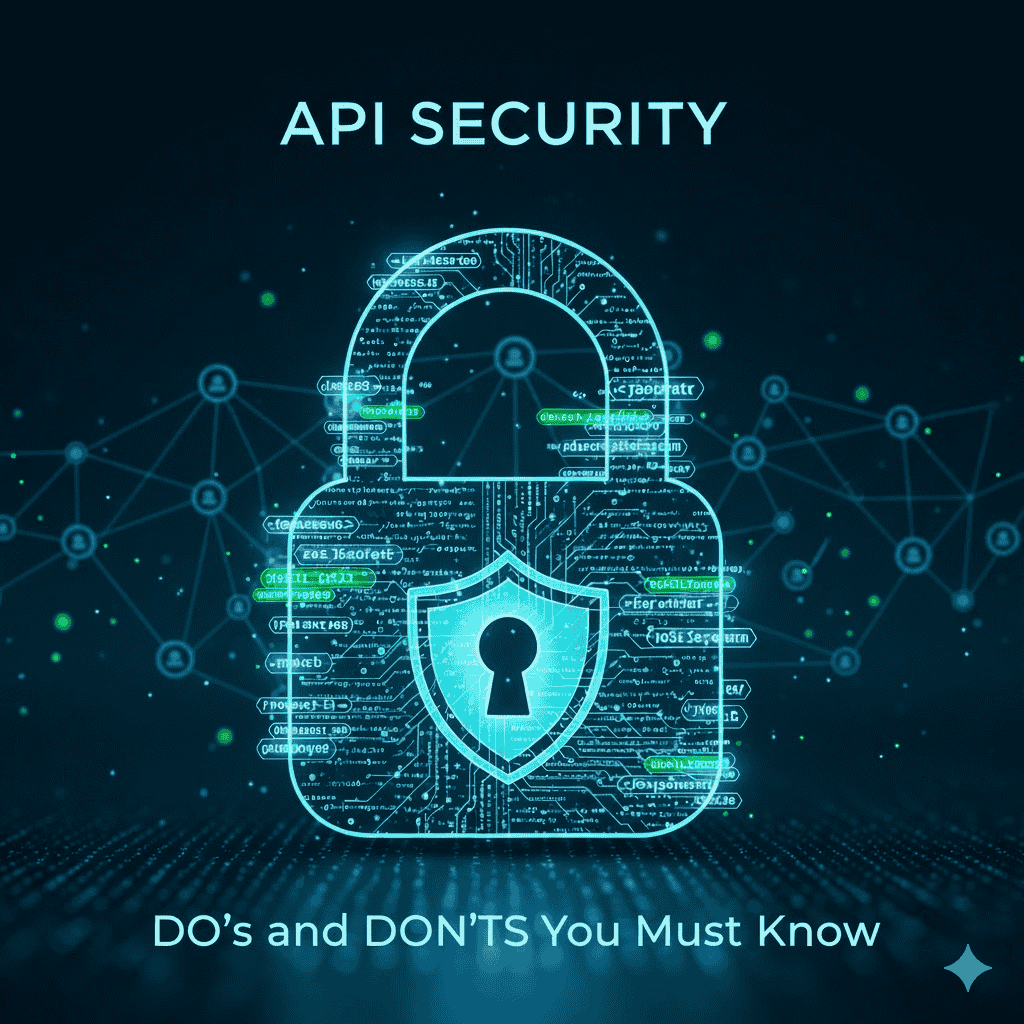Introduction
As a Security Researcher, I’ve seen firsthand how critical API security has become in the modern digital landscape. APIs are the backbone of most applications, and their vulnerabilities can expose sensitive data and disrupt services. My journey into this field was greatly enhanced by the insights I gained from the API Security Fundamentals course at APISec University, which provided a solid foundation for understanding the core principles of protecting these digital gateways. This blog post distills some of the most crucial lessons into a simple, actionable guide for professionals in the IT community.
DO’s and DON’Ts in API Security
DOs: The Best Practices to Implement
1. DO validate all inputs (not just user)
- Implement strict schema validation to ensure that incoming data conforms to the expected format and type.
- Validate data from all sources, including internal systems, third-party integrations, and upstream services.
- Use allow-lists for input values whenever possible, rather than block-lists.
- Sanitize inputs to prevent injection attacks like SQLi, XSS, and command injection.
- Check for business logic vulnerabilities that can be exploited by manipulated input data.
2. DO expect attackers to find your APIs
- Assume your APIs will be probed and attacked, regardless of whether they are public or internal.
- Adopt a “defense-in-depth” strategy with multiple layers of security controls.
- Regularly perform penetration testing and red team exercises to identify weaknesses.
- Monitor API traffic for suspicious activity, such as unusual request patterns or high error rates.
- Educate developers on secure coding practices and common API attack vectors.
3. DO use Gateways to control access and traffic
- An API Gateway acts as a central control point, providing a single point for authentication, authorization, and traffic management.
- Implement rate limiting to protect against DDoS attacks and brute-force attempts.
- Use gateways to enforce API contracts and routing rules.
- Gateways can provide a layer of abstraction, shielding the backend services from direct exposure.
- They enable centralized logging and monitoring for better security visibility.
4. DO require API Documentation
- Provide clear and up-to-date documentation using standards like OpenAPI (Swagger).
- Documentation helps developers understand the API, but it also aids security teams in identifying potential attack surfaces.
- Document all endpoints, required parameters, and expected response formats.
- Include details on authentication mechanisms and authorization scopes.
- Keep documentation in sync with the live API to prevent confusion and errors.
5. DO continuously test before deployment
- Integrate API security testing into your CI/CD pipeline.
- Use automated tools for static and dynamic application security testing (SAST/DAST).
- Perform security audits as part of the code review process.
- Conduct vulnerability scanning on a regular basis.
- Test for common vulnerabilities like those listed in the OWASP API Security Top 10.
DON’Ts: Mistakes to Avoid
6. Don’t trust anything (inputs/network)
- Never assume data is safe, even if it comes from an internal network or a trusted source.
- All data must be treated as untrusted until it is validated and sanitized.
- Implement zero-trust principles, where every request and user is verified.
- Authenticate and authorize every API call, regardless of its origin.
- Protect against man-in-the-middle attacks by using TLS/SSL and other network security measures.
7. Don’t reveal useful information in error messages
- Generic error messages like “Invalid credentials” or “Resource not found” are sufficient.
- Avoid including sensitive details such as stack traces, database schema information, or server file paths in error responses.
- This prevents attackers from gaining valuable insights into your application’s architecture and potential vulnerabilities.
- Log detailed errors internally for debugging purposes, but never expose them to the client.
- Be consistent in your error handling and use standardized error codes.
- Every feature and endpoint should be documented and pass through your standard security review process.
- Hidden endpoints, often left over from development or testing, can become a significant security risk.
- An attacker who discovers an undocumented endpoint can exploit it without the security team’s knowledge.
- Conduct regular API audits to ensure all active endpoints are known and documented.
- Use API Gateways to control and manage all exposed endpoints, preventing access to unadvertised ones.
9. Don’t filter data in UI
- Data should be filtered and restricted at the API and backend level, not just in the front-end interface.
- A user with a web proxy can easily bypass client-side filters and access unauthorized data.
- Ensure that API calls enforce proper authorization and only return the data the user is permitted to see.
- Implement object-level authorization to protect individual resources and control data access at the application level.
- Relying on UI filtering creates a false sense of security and leaves your system vulnerable.
10. Don’t forget Authentication and Authorization
- Authentication (who you are) and Authorization (what you can do) are the cornerstones of API security.
- Use strong, industry-standard authentication mechanisms like OAuth 2.0 and JWTs.
- Implement role-based access control (RBAC) or attribute-based access control (ABAC) to enforce granular permissions.
- Never hardcode secrets or API keys in the code.
- Ensure that all sensitive endpoints require a valid token and that the user’s permissions are checked on every request.
Final Thoughts
API security is not a one-time task but a continuous process. By embracing these API Security Best Practices and integrating them into every stage of the software development lifecycle, you can build a robust and resilient security posture that protects your digital assets and your users’ trust.




